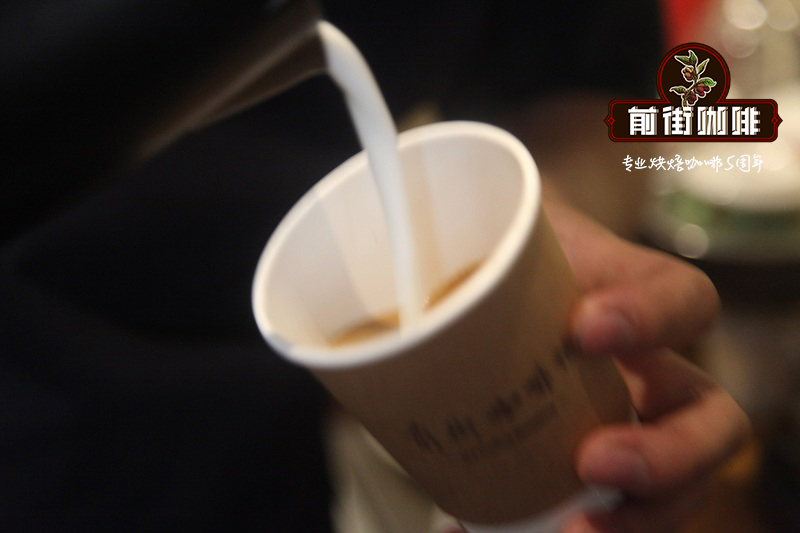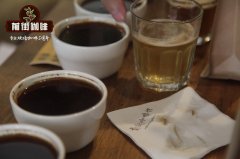Brazil Santos Santos / Santos Coffee Flavor introduction how about Brazilian Santos coffee

Professional coffee knowledge exchange more coffee bean information please follow the coffee workshop (Wechat official account cafe_style)
Due to congenital conditions, the Brazilian government has invested a lot of resources to improve varieties and disease resistance since the 1930s. Among them, the results of bean research still affect the planting habits of Latin America as a whole. For example, they cultivated the natural variety Yellow Bourbon of Bourbon from 1/1000000 opportunities in the 1930s, discovered Caturra (the Bourbon variety) in the 1940s, and later Mundo Novo (artificial breeding of Typica & Bourbon), Catua í (artificial breeding of Mundo Novo & Caturra), Icatu (with Robusta pedigree) produced in the 1990s, and the rare Acai á (breeding of Mundo Novo). Most of the countries in China and the United States choose suitable varieties from the above list. When my friends encounter problems, they mostly turn to their Brazilian counterparts for advice. The Brazilian Ministry of Agriculture and its academic research institutes established Cons ó rcio Pesquisa Caf é in 1997 to further specialize in coffee planting, disease resistance research and harvesting and treatment. Genoma Caf é, established in 2002, is the forerunner of coffee gene map.
The Cup of Excellence (COE) contest, which represents the boutique sports, is the predecessor of Best of Brazil. Since 1999, 12 countries have participated in the event. In the past, COE only accepted non-tanned coffee, but in view of the fact that Brazilian coffee is mostly tanned and farmers' mastery of the technology has improved, the Congress has held a "Late Harvest" competition for Brazilian coffee since 2012. In this year's competition, among the top 10 non-tanning groups (Early Harvest), Yellow Bourbon won six and Yellow Catua í three. As for the sun group, Catua í was dominant, accounting for 8. Acai á won the rest of the rankings. It can be seen that the advantages of different kinds of beans will give full play to their potential due to proper handling.
Brazil, which can be called the "coffee continent", is the world's largest coffee producer and exporter, accounting for about 1% of the world's total output. It is especially famous for Brazilian Brazil Santos, which is exported from Santos port in Sao Paulo state. The raw beans are large, light green or yellowish. Brazilian Santos, with a mild flavor, is suitable for those who first come into contact with coffee and can drink a touch of sweetness without adding sugar. Acidity and bitterness can be mixed by baking, and it is often used as the base for blending mixed coffee or mamba or Mamba coffee.
The coffee exported by the port of Santos (Santos / Santos) is named Brazil Santos Coffee (Brazilian Santos / Santos coffee).
Mainly produced in southeastern Brazil, belongs to the Robusta (Robusta) variety.
Suitable for those who are new to coffee to try to drink, moderate acidity and bitterness, smooth and moist entrance.
There is no need to add sugar to drink a touch of sweetness, sour and bitter taste can be mixed by baking, and it is often used as the base for blending mixed coffee or mamba or Mamba coffee.
Flavor description: the taste belongs to neutral, fragrant, no exciting sour taste, smooth and smooth, slightly bitter, is the best choice for you who are afraid of sour taste.
Qianjie coffee: Guangzhou bakery, the store is small but a variety of beans, you can find a variety of unknown beans, but also provide online store services. Https://shop104210103.taobao.com
Important Notice :
前街咖啡 FrontStreet Coffee has moved to new addredd:
FrontStreet Coffee Address: 315,Donghua East Road,GuangZhou
Tel:020 38364473
- Prev

Brazilian coffee brand Santos / Santos tastes good. How do you drink Brazilian Santos coffee?
Professional coffee knowledge exchange more coffee bean information please follow the coffee workshop (Wechat official account cafe_style) Brazilian coffee was introduced from French Guiana in 1729. Coffee was originally grown in the north, but the coffee trees did not grow well until 1774, when a Belgian missionary planted coffee in Rio, a warmer and humid climate in southern Brazil.
- Next

Brazil Minas Datra (Daterra) Manor Sun Bean Rainforest Alliance Brazilian Coffee Special
Professional coffee knowledge exchange more coffee bean information please follow the coffee workshop (Wechat official account cafe_style) Brazil is the world's largest coffee producer accounts for about 30% of coffee production, but because Brazil is located in the tropical rain forest, the terrain is relatively flat with few high-altitude mountain forests, most coffee is grown in low-altitude non-volcanic soil, and there is not much shade as a shade.
Related
- Detailed explanation of Jadeite planting Land in Panamanian Jadeite Manor introduction to the grading system of Jadeite competitive bidding, Red bid, Green bid and Rose Summer
- Story of Coffee planting in Brenka region of Costa Rica Stonehenge Manor anaerobic heavy honey treatment of flavor mouth
- What's on the barrel of Blue Mountain Coffee beans?
- Can American coffee also pull flowers? How to use hot American style to pull out a good-looking pattern?
- Can you make a cold extract with coffee beans? What is the right proportion for cold-extracted coffee formula?
- Indonesian PWN Gold Mandrine Coffee Origin Features Flavor How to Chong? Mandolin coffee is American.
- A brief introduction to the flavor characteristics of Brazilian yellow bourbon coffee beans
- What is the effect of different water quality on the flavor of cold-extracted coffee? What kind of water is best for brewing coffee?
- Why do you think of Rose Summer whenever you mention Panamanian coffee?
- Introduction to the characteristics of authentic blue mountain coffee bean producing areas? What is the CIB Coffee Authority in Jamaica?

